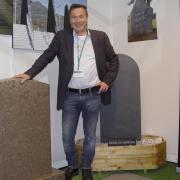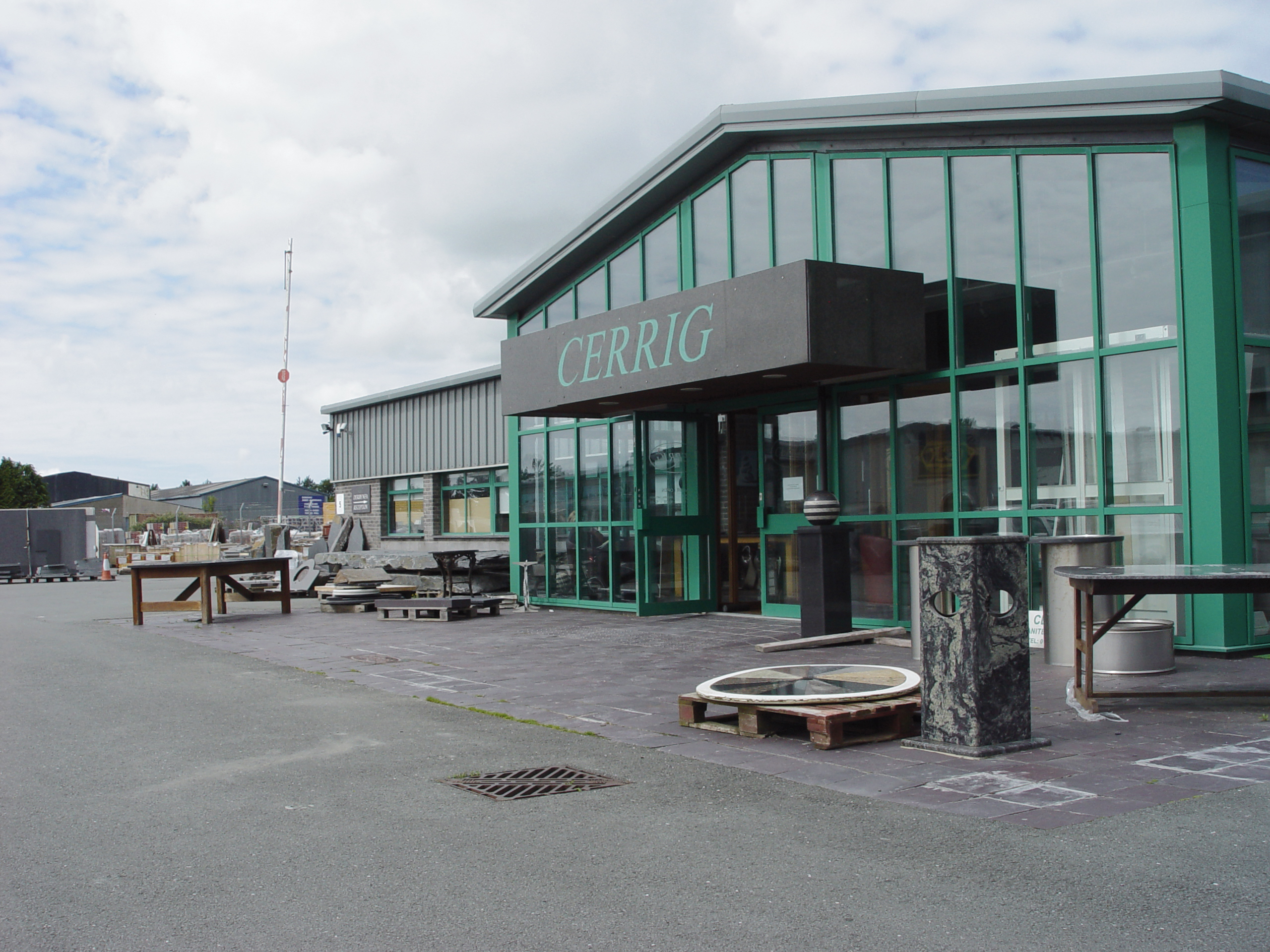Stonemasons : Cerrig Granite & Slate Ltd
On the Lynn Peninsular in north-west Wales the default language is Welsh. But Cerrig (Welsh for stone) Granite & Slate is looking beyond the borders of the Principality for its customers.
Cerrig Granite & Slate is based in Pwllheli on the Lynn Peninsular in the north-west of Wales. But Director Hugo Were is keen to point out the company’s natural routes to market head into England. He says getting to Manchester and Chester is easy and “I can be in London quicker than it takes me to get to Cardiff”.
The company’s website makes the same point: “natural stone suppliers to the UK” it says and then repeats it for the sake of search engine optimisation.
Cerrig is a modern company employing more than 30 people – as many as it has ever had – and with some sophisticated machinery to keep busy. The experience of the post-2008 economic crisis has taught it that Wales alone cannot provide enough work to keep those resources fully employed. So it is looking outside Wales for work.
The range of work the company offers is extensive – from kitchen worktops to cladding and paving; from fireplaces and furniture to architectural masonry and memorials; from new build to conservation.
Cerrig has set out a broad stall because its knowledge of stone is as extensive as its ability to work it, from a waterjet and CNC workcentre to banker masonry and hand lettering.
And being in one of the lowest cost parts of the UK enables Cerrig to make a price promise that it will beat any like-for-like quotation. If you want to test that for yourself, go to the company’s website (www.cerrig-granite.co.uk) and try it. You can select your project requirements online from a drop-down menu of the work on offer from the company, enter your specific details, and the company promises to be back to you within 24 hours with its quote. It reckons its quote will be better than any other, but if you can demonstrate you have received a lower quote from somewhere else, it will have a re-think.
It is all part of Hugo Were’s plan to make the geographical and product base of the company as wide as possible, minimising its exposure to any one sector or customer.
When the banking crisis turned into general recession in 2009 Cerrig was too greatly exposed to the construction industry and suffered the results of that. Hugo, who came into the business after that, does not want the firm to be in that position again.
Last year Cerrig even made a bid to take a bit more of the memorial market by exhibiting a new range exclusively in British stone at the NAMM exhibition in the Warwickshire Exhibition Centre in June.
 Hugo says: “It’s a crying shame there are so few British stone memorials – perhaps 2% of the 100,000 memorials bought each year. Others might be given British-sounding names but they have been made using slave and child labour. A lot of people came to see me at the NAMM show because of the comments I had made about that in Natural Stone Specialist before the show. A lot of them were uncomfortable about it and said customers do ask about it.”
Hugo says: “It’s a crying shame there are so few British stone memorials – perhaps 2% of the 100,000 memorials bought each year. Others might be given British-sounding names but they have been made using slave and child labour. A lot of people came to see me at the NAMM show because of the comments I had made about that in Natural Stone Specialist before the show. A lot of them were uncomfortable about it and said customers do ask about it.”
There is a premium to pay for British stone in a market dominated by imports from India and China, but Hugo says: “British stone memorials don’t need to cost the Earth. My impression is that there genuinely is an interest.” He believes that interest will double his sales of memorials this year.
Hugo likes to use British stone where he can, including Welsh slate and granite. He has Welsh slate worktops on display in his showroom and last year supplied Welsh slate pig, sheep and cow shaped place settings for a hotel in the USA and Welsh slate bowls for a hotel in Dubai. Cerrig’s regular product range includes curling stones made from Welsh Trefor granite, which the Canadians particularly like.
Welsh slate and granite accounts for about a quarter of Cerrig’s output. Most of what the company makes is not in British stone. In fact, half the worktops it makes are not natural stone at all but engineered quartz. There is also a display in the showroom of Dekton, one of the new sintered stones. Hugo says of it: “It’s hard, but it’s got a very nice texture and you can do some interesting things with it.”
Cerrig keeps specially made tools for working Dekton. It has not produced any sunken drainers in Dekton to date and is not sure it wants to because the material is so hard.
Cerrig does make what might be considered run-of-the-mill paving, worktops masonry and memorials, as well as worktops. But what Hugo is especially proud of are the projects where Cerrig has solved customers’ problems, because it has made a speciality of producing the intricate and difficult work that others shy away from.
One of the most unusual requests it has been involved in came from the clothes fashion industry.
Hugo received a call from a fashion house that wanted a natural stone catwalk it could transport around the World for fashion shows, quickly putting it together and dismantling it at the various locations its collections would be shown.
“I got this call one evening. The man said I don’t know if you can help with this, but...”
And, of course, there was precious little time for the catwalk actually to be made. It was essential it should be absolutely flat when assembled so the models would not trip up.
The requirement was for a black and white platform. Cerrig made it out of a patchwork of slate and ceramic on a backing board that interlocks like a jigsaw puzzle.
“It was absolutely full square what we do. We like the fiddly, difficult stuff where we can solve people’s problems.”
There’s another example in Tottenham Court Road in London where Cerrig produced a snaking, three-dimensional ‘S’ in laminate limestone cladding panels.
Then there’s an 850m2 project in Bangor. Hugo: “You have to be careful about the quality of the slate you use. It is 500mm x 300mm, 20mm thick and held with anchors at the back. It’s a repair job. It was done originally by another company in 2007 but had not lasted, so this time they’ve come to the experts – us.”
By setting out Cerrig as a specialist problem solver and a low-cost product supplier, Hugo’s intention is to increase the proportion of the company’s income from a wider geographical area to more than 50% this year, compared with 30% that came from outside Wales last year. He would also like more of that work to involve Welsh slate, which it might well do. Cerrig has already supplied English Heritage with slate and with the newly created charity having been given £80million by the Government to bring its properties up to scratch as it heads towards becoming self-financing, there could be more work ahead.
Hugo has quickly assimilated himself into the stone business that he has helped rescue, but his background is not in stone. For 25 years he was a business consultant. But in what he admits was probably a mid-life crisis, he bought a motorbike and rode across Africa and the Himalayas. He returned to the UK refreshed and with a bit more perspective about his life. At the same time, Cerrig, owned by his wife’s family, needed some help. “It was serendipity,” says Hugo. “A lot of the best things in life are.”

